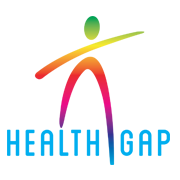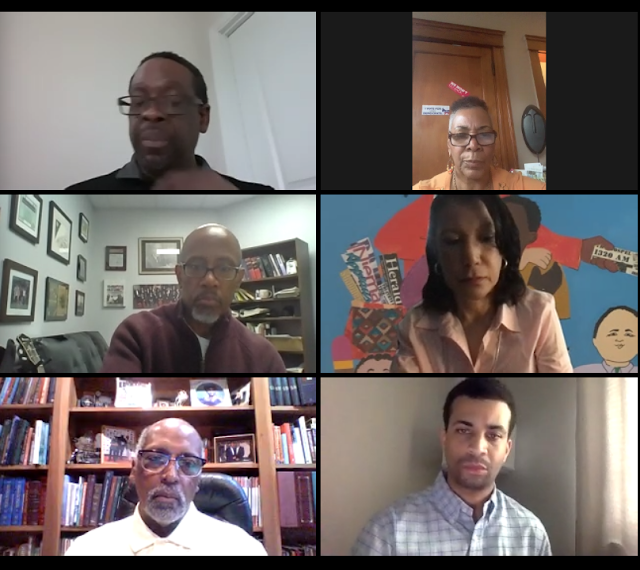Community unites to share information, offer help, and problem solve
By R. T. Andrews
No one should be surprised that the novel coronavirus currently spreading across the globe finds a receptive home in communities of color. A virus will naturally invade where it finds weakness. And more than a century of everything from redlining to disinvestment to hazardous waste dumping to predatory lending has combined to render the architecture of the black community distressingly open to hostile forces.
But the good news is that, at least in Cincinnati, a growing coalition of African American community groups is working together to address the complex of problems made urgent by the global pandemic. Tired of just reacting to injuries and insults both societal and systemic, several black leaders have decided to pool their resources and become a center of strength and service to the community around all things COVID.
The initiative appears to have begun with Renee Mahaffey Harris of the Center for Closing the Health Gap. Since the mission of her organization is the elimination of racial and health disparities that diminish the quality of life in the black community, she was quick to perceive the special dangers that COVID-19 poses to African Americans and determined not to be passive in her response.
She quickly found receptive partners in the African American Chamber of Greater Cincinnati and Northern Kentucky, the Urban League of Greater Southwestern Ohio, the Cincinnati NAACP, and the Cincinnati Medical Association [CMA].
One of the group’s first decisions was to establish a centralized interactive information operation. First, they established a website, https://covid19communityresources.com, to centralize and make available basic information, including emergency aid, health information, legal assistance, and much more. Second, they began a series of virtual town hall meetings, open to the community and accessible to all. Community leaders come together to share information, answer questions, and dispel rumors.
These town hall meetings have been growing in popularity, utility, and sophistication as people across Cincinnati and beyond log on. Panelists and participants for last Saturday’s meeting included Dr. Clyde Henderson [CMA]; Attorney David Singleton, who heads the Ohio Justice & Policy Center [OJPC]; Bishop Bobby Hilton of the Greater Cincinnati National Action Network; and at least three state legislators, including House Minority Leader Emilia Sykes of Akron. The meetings are chaired by Cincinnati businesswoman and publisher Jan-Michele Kearney, who was appointed last month to Cincinnati City Council.
Discussion topics ranged from the adequacy of testing for the virus to the plight of families desperate to find news and help for their incarcerated loved ones. Kearney reported that a community organization headed by Rev. Damon Lynch III had opened a clinic at Mercy Health Center as a testing site. Sykes said, “testing is woefully inadequate … Ohio per capita has the lowest rate in the country.”
With regard to prisons, Singleton pointed out that prisoners in lower security facilities sleep in dorms, three feet apart. He said that the Hamilton County jail population had been reduced from 1200 to 800 and credited the Hamilton County public defender’s office for their hard work in contributing to this result. Singleton said that the community did not need to return to higher jail numbers.
In response to a question about a vaccine for the coronavirus, Dr. Henderson said the likelihood of a vaccine by the normal beginning of the school year is “very, very low.” He also said there probably would not be enough herd immunity until sometime in 2022.
In response to other questions, Henderson addressed concerns about the mental health aspects of the pandemic with respect to children. He said this was an issue for all ages; adults should answer the questions that children ask, he said, but “don’t burden them with information they have not asked for.” Henderson noted the importance of having a primary doctor: they are your gateway into the health care system, he said.
There were also questions about pandemic daycare centers, the problems businesses have encountered when ordering PPEs [personal protection equipment], and the similar challenges faced by employees of nursing homes and correctional facilities [the residents are permanent, the staffs come and go daily].
Kelli Prather, who sought the Ohio Democratic nomination for US Senate in 2016, asked about plans to do a statewide disparity study in relation to the pandemic. State Rep. Emilia Sykes noted the Governor has announced a minority health strike force and said she has been pressing leadership about a budget for the task force’s work and when action is going to start. Sykes, who is one of the group’s 38 members, said “we need to get to work yesterday.”
The meeting ended with a reminder and last-minute tips from Cinci NAACP vice president about voting in yesterday’s primary. [Visit here for video recordings of the three meetings to date.]
Since the coalition first came together, other community organizations have rushed to climb aboard, including the Cincinnati African American Firefighters Association, the Sentinel Police Association, SO-ACT, Public Medical, and the Avondale Development Corporation.
The next Town Hall is set for this Saturday, May 2, from 4p-6p and will focus on two primary issues: re-opening the state for business and the pandemic’s effects on education. Representatives from the Governor’s office are expected to describe what “partial reopening” means.
The Health Gap’s Harris said the agenda should be on the group’s website later today.

